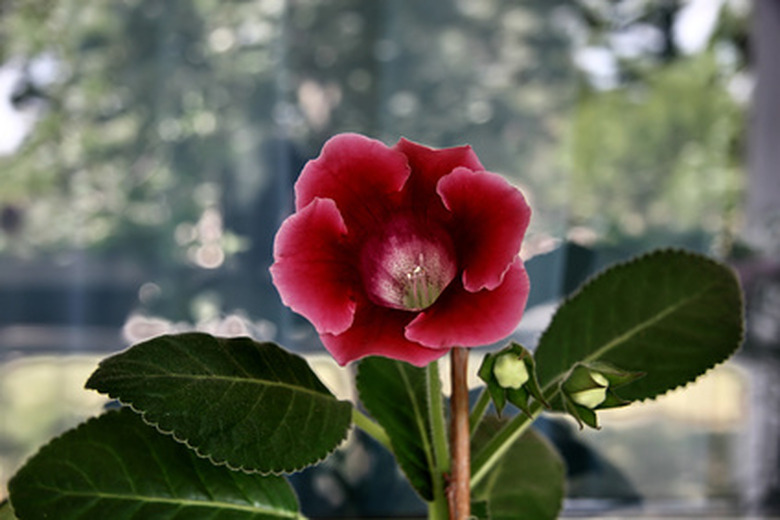Indoor Plants That Have Leaves Similar To An African Violet
African violets are indoor plants beloved for their nearly nonstop, colorful blooms nestling above dense, furry foliage. Those downy leaves, however, aren't limited to African violets. Several attractive–and often overlooked–indoor plants share this trait. Like those of African violets, their leaves don't respond well to being wet. Clean them with a soft brush or pressure cleaner, advise Clemson Cooperative Extension's horticulture specialist Debbie Shaughnessy and floriculture specialist Al Pertuit.
Gloxinia
Closely related to African violets, gloxinias (Sinningia speciosa) are tuberous plants with broad, downy medium green leaves. Popular in florist shops at Christmas, Easter and Mother's Day, gloxinias in full bloom are spectacular. Their trumpet-shaped blooms come in a wide range of solid or bi-colors, from bright red for the winter holidays to white, soft pink and deep purple for spring.
- African violets are indoor plants beloved for their nearly nonstop, colorful blooms nestling above dense, furry foliage.
- Like those of African violets, their leaves don't respond well to being wet.
Requiring more light than African violets, gloxinias do best by a bright window where direct, late-spring sun won't scorch their leaves. Misting around them without wetting their leaves provides necessary humidity, according to the University of Missouri Extension Department of Horticulture's Ray R. Rothenberger and David Trinklein. Daytime temperatures between 75 and 85 degrees F, with nights 10 degrees cooler, let gloxinias perform their best.
Strawberry Begonia
Strawberry begonia (Saxifraga sarmentosa), lives up to its name by sending out new plants on strawberry-like runners up to 2 feet long. This cascading indoor plant stands just 6 to 9 inches high. Ideal for hanging baskets, this begonia has round, hairy leaves with silvery-white veins against a deep green background. Its compact shape and furry leaves are similar to those of African violets. It likes bright, but diffused light, damp soil and regular feeding when not dormant, according to the Texas A&M Agrilife Extension.
- Requiring more light than African violets, gloxinias do best by a bright window where direct, late-spring sun won't scorch their leaves.
- Strawberry begonia (Saxifraga sarmentosa), lives up to its name by sending out new plants on strawberry-like runners up to 2 feet long.
Velvet Plant
A perennial in USDA plant hardiness zones 10 to 12, velvet plant (Gynura aurantiaca) grows as an indoor plant in colder regions. Reaching up to 2 feet high with a 4-foot spread, velvet plant has large–up to 8-inch–toothed green leaves covered with purple hairs. These hairs make it look similar to African violet leaves. As an indoor plant, it needs bright sunlight but no direct afternoon sun. With enough sun, plants have vivid leaf color and small, yellow fall-to-midwinter blooms. Velvet plant likes evenly moist soil that is slightly drier during its blooming period, notes the Missouri Botanical Garden.
Swedish Ivy Marginatus
Swedish ivy (Plectranthus forsteri) Marginatus, a trailing mint-family perennial, has round, creamy-edged, pale green downy leaves on red stems. The round, hairy leaves look somewhat like those of an African violet. Crushing its leaves releases a pleasant citrus scent. Hardy to zones 10 and 11, it's an indoor foliage plant in other areas. Standing 6 to 12 inches high, Marginatus trails as much as 3 feet. During summer, it has 6-inch spikes of tiny, tubular white or pink flowers, according to the Missouri Botanical Garden. As a houseplant, it needs a bright location but no direct sun exposure. Marginatus suffers at temperatures less than 55 degrees F. It performs best with bi-weekly spring and summer feeding, reduced to monthly in fall and winter.
- A perennial in USDA plant hardiness zones 10 to 12, velvet plant (Gynura aurantiaca) grows as an indoor plant in colder regions.
- Hardy to zones 10 and 11, it's an indoor foliage plant in other areas.
